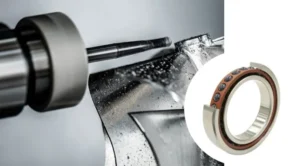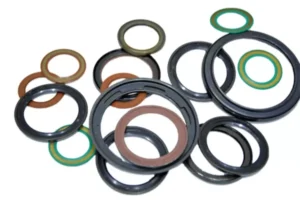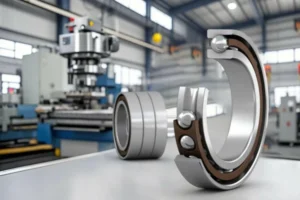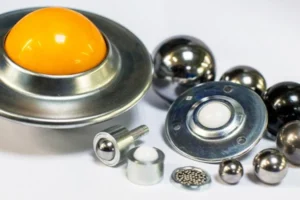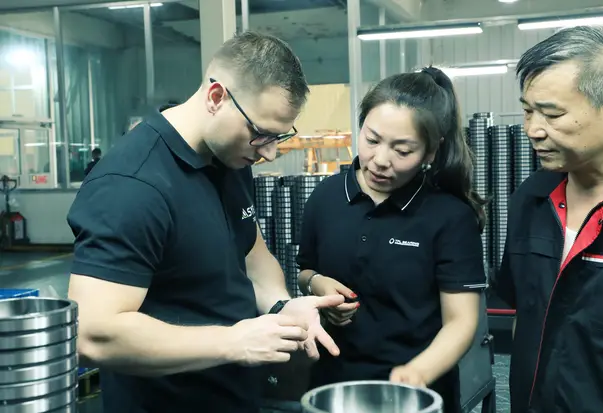Introduction
If you’ve ever ridden a bike, driven a car, or even used a skateboard, you’ve relied on ball bearings. These little metal balls help things spin smoothly without grinding to a halt. But have you ever wondered who came up with this clever idea? Let’s take a quick trip through the history of ball bearings!

The Early History of Ball Bearings
People have been trying to make things easier for a very long time. Even way back when there were no cars or machines like we have today, people thought about how to reduce friction – that rubbing that makes things slow down.
Long before modern ball bearings, people were already figuring out ways to reduce friction. The ancient Egyptians moved heavy stones by rolling them on logs, and the Romans used simple wheel designs. But these weren’t true ball bearings—just early steps toward the idea.

Was Leonardo da Vinci the First to Draw Ball Bearings?
Way back around 1500, a guy named Leonardo da Vinci—he was a super smart artist—drew some sketches. Leonardo da Vinci was an outstanding artist from Italy and one of the typical “Renaissance men”. It is no exaggeration to call him the “father” of modern bearings.
Leonardo da Vinci was passionate and curious about everything, and he left a deep impression not only in the art world but also in the field of mechanical design. In one of his notebooks, you can find a sketch of a bearing, which is an indispensable part of machinery. This unparalleled ingenuity gave birth to a bearing that greatly reduced friction.

The structure is that of two upper and lower rings (races) and rolling balls (rolling elements) sandwiched between the rings. Amazingly, this sketch even includes a “cage” so that the balls do not touch each other.

This is almost the same bearing structure that we continue to use today. This “basic bearing structure” consisting of raceways, rolling elements (“balls” or “rollers”) and cages was proposed about 500 years ago. It was because of Leonardo da Vinci that bearings were able to achieve this milestone leap.
Ball Bearing’s Real Inventor: Philip Vaughan
Then in 1794 a Welshman called Philip Vaughan stood up. He produced the first actual ball bearing. He placed it in carriage axles to prevent rides from being so jittery. Ball bearings then evolved from a concept to something you could really apply. During the Industrial Revolution, this creation changed everything since it improved machinery efficiency. Though Vaughan might not be well-known, his work helped to create the ball bearings we use now.
Bicycles and Ball Bearing’s Next Big Step
French bicycle technician Jules Suriray refined ball bearings in 1869 by smoothing them out and increasing dependability. A racing bike, which claimed first place in the inaugural bicycle race, made use of his bearings. That proved how useful ball bearings could be, not just for wagons but for faster-moving machines too.

How Have Ball Bearings Changed Over Time?
In the beginning, ball bearings were mostly used in wagons and early machines. They helped reduce wear and tear on wooden axles. As technology advanced, ball bearings found their way into trains, cars, and factories.
Factories and Machines Needed Better Bearings
The Industrial Revolution lasted roughly from the mid-18th century into the 19th century. Steel was produced in large quantities, which allowed high-strength steel bearings to be mass-produced for the first time. This meant that bearings could be used in a wide range of industrial applications. Axles using bearings were a particularly important discovery of the Industrial Age.
Mass Production: The 1900s Boom
The way they are made and the materials they are made of have gotten much better over time. Ball bearings were used in ships, cars, and planes by the early 1900s. Engineers kept making them better, making the balls that hold bearings stronger and better able to handle heat. These changes have made modern transportation faster and more efficient.
Today: Stronger, Smarter Bearings
Modern materials like stainless steel and ceramics are now used to make ball bearings, which extend even more lifetime. Whether you’re building something new or repairing a car, at TFL Bearings we’re continually refining our designs to ensure optimal performance.

Conclusion
It’s crazy to think about how far we’ve come from simple wooden wheels to high-tech ball bearings. They are small, but they are everywhere and make your life easy while you don’t even know it.
Need high-quality ball bearings that you can count on for a business or project? At TFL Bearings, we are proud to offer a wide range of ball bearing solutions.
Contact us today to learn more about how our ball bearing bearings can help you!
Popular Questions About Ball Bearings
Who really invented the ball bearing?
It’s a bit of a mystery! Leonardo da Vinci drew some early ideas, but Philip Vaughan got the first official paper for a kind of ball bearing.
When did people first start using ball bearings?
The idea is old, but they started showing up in machines in the 1700s, with the first patent in 1794.
What are ball bearings used for anyway?
They help things move smoothly and cut down on rubbing in lots of machines, like cars, bikes, and fans.
What are those little balls inside ball bearings made of?
Usually, they’re made of really hard stuff like steel so they can handle pressure and rubbing.
How do ball bearings actually work?
Instead of parts rubbing together, the little balls roll between them. This makes it much easier for things to move.
